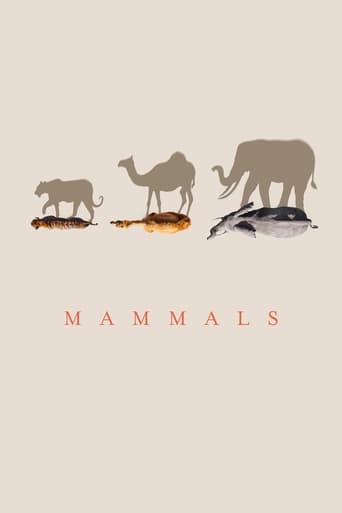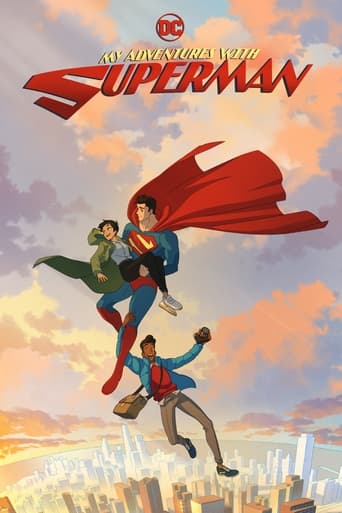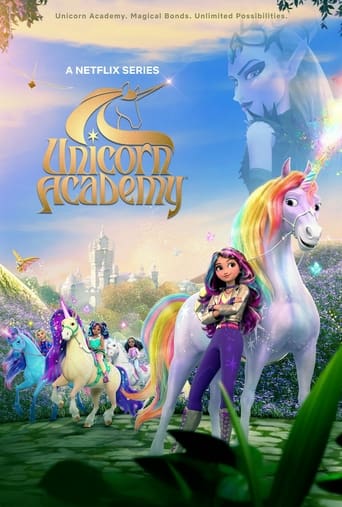Best movies & TV Shows like Architectures
A unique, carefully handpicked, selection of the best movies like Architectures . If you liked Architectures then you may also like: Gray Matters, The Marva Collins Story, Leaning Out - An Intimate Look at Twin Towers Engineer Leslie E Robertson, Andrée Putman, A Juggernaut of Design, Love in Design and many more popular movies featured on this list. You can further filter the list even more or get a random selection from the list of similar movies, to make your selection even easier.
An ongoing series of films devoted to the most remarkable achievements in modern architecture, from the works that heralded the birth of the modern style at the end of the 19th century to the latest designs from today's top architects. By examining each building in detail, the series brings to light the role each has played in the history and evolution of architecture.
Architectures
You may filter the list of movies on this page for a more refined, personalized selection of movies.
Still not sure what to watch click the recommend buttun below to get a movie recommendation selected from all the movies on this list
The Marva Collins Story
Cicely Tyson was Emmy-nominated as Outstanding Actress for her portrait of a Chicago schoolteacher whose remarkable achievements with black children labelled "unteachable" were spotlighted in a 1979 "60 Minutes" segment about how she became disillusioned with the traditional school system and decided to work outside of it, transforming her students into young scholars through her unique teaching style.
Leaning Out - An Intimate Look at Twin Towers Engineer Leslie E Robertson
A man with a perspective like no other on the planet. The leading structural engineer of the World Trade Center oversees its construction, haunted by its fall ever since. A guru in high-rise design. Driven by his values as a pacifist and activist and the woman engineer who emboldened, expanded and ultimately saved the man she loved. About fulfillment, fragility, and a fighting spirit.
Andrée Putman, A Juggernaut of Design
An icon of French taste, free and eccentric, Andrée Putman (1925–2013) imposed her unique style and shaped a generation of architects. With archival images and personal testimonials, this documentary is a beautiful tribute to one of the leading ladies of interior design.[arte.tv]
Love in Design
In need of a shakeup on her home-makeover TV show, star Hannah is sent to her small New England hometown to renovate the historical Lewisburg Manor. When old flame Jeff is assigned to make sure Hannah's design preserves the historical manor, the two must find harmony between the old and the new.
Nitrate Base
This documentary celebrates the 100th anniversary of the cinema birth. It is an historic running through the technical and artistic evolution of the 7th art. We move from mute to sound, from B&W to color, trough all the genders (musical, Lyric, politic...). Beside it we have a kind of resume of the historic contest in which cinema lived till now, events and movements (neo-realism, classical etc.). All the aspects are taken in consideration: fashion, star system till the end, the sad end, of cinema in the theaters.
Calculating Ada: The Countess of Computing
Ada Lovelace was a most unlikely computer pioneer. In this film, Dr Hannah Fry tells the story of Ada's remarkable life. Born in the early 19th century, Ada was a countess of the realm, a scandalous socialite and an 'enchantress of numbers'. The film is an enthralling tale of how a life infused with brilliance, but blighted by illness and gambling addiction, helped give rise to the modern era of computing.
Peter Eisenman: Building Germany's Holocaust Memorial
This documentary explores the creation of the Holocaust Memorial in Berlin as designed by architect Peter Eisenman. Reaction of the German public to the completed memorial is also shown.
David Macaulay: Roman City
The glories of Ancient Rome are explored in ROMAN CITY, based on David Macaulay's acclaimed book. This animated and live-action video recounts life in Verbonia, a fictional city in Gaul. A well-planned town with all modern conveniences, it is threatened by conflict between conquerors and conquered. Macaulay also visits Pompeii, Herculaneum, Ostia, Nimes, Orange, and Rome, to view actual Roman architecture and engineering greatness.
First Person Singular: I.M. Pei
Architect I.M. Pei speaks about his famous works, such as the addition to the Louvre in Paris, the East Wing of the National Gallery of Art in Washington, D.C., and the Meyerson Symphony Center in Dallas, Texas. Footage of these projects shows both interiors and exteriors. Various other experts comment on the impact and importance of Pei's work.
Changing Landscapes
A sophisticated and beautifully constructed account of landscape change in and around Paris in the early 1960s. The film raises complex issues about the meaning and experience of modern landscapes and the enigmatic characteristics of features such as canals, pylons and deserted factories. Rohmer also explores the role of landscape within different traditions of modern art and design and refers to specific architects, artists and engineers.
Paris Brothel
From the early 19th century 1946 Paris had many brothels that were tolerated and controlled by the state. These were sometimes rough places but more often were housed in richly designed buildings and serviced a clientèle from all walks of life. This documentary looks back at the Paris brothels through photographs, historians as well as memories from some who would frequent them as clients or work there as prostitutes.
Titanic's Achilles Heel
An expedition looks into whether Titanic's hull had a construction design flaw that caused her to break apart. Featuring advanced CGI technology, archive documents and photographs, as well as footage from the modern-day History(R) expeditions, "Titanic's Achilles Heel" is a remarkable journey into the ongoing legacy of a ship that continues to capture the world's attention.
The Cinematograph: Birth of an Art
Throughout the 19th century, imaginative and visionary artists and inventors brought about the advent of a new look, absolutely modern and truly cinematographic, long before the revolutionary invention of the Lumière brothers and the arrival of December 28, 1895, the historic day on which the first cinema performance took place.
The builders’ challenge
The Strasbourg cathedral is a stunning edifice, a masterwork of gothic architecture which also expresses the bold ambitions of its creators. With its church spire which rose to a height of 142 meters it became the world’s tallest building and it held that distinction until the 19th century. Who were the master builders of the cathedral? What is the cathedral’s history?
Barbra Streisand: Becoming an Icon 1942–1984
Barbra Streisand grew up in working class Brooklyn, dreaming of escape from her tough childhood. A stellar student, she resisted the pressure to go to college as her sights were firmly set on Broadway. She was determined to become an actress and landed her first role aged 16, but it was two years later, when she started to sing, that her career took off. Subverting stereotypes and breaking glass ceilings, this programme looks at her rise to stardom and the remarkable achievements of her early career.
Clean Lines, Open Spaces: A View of Mid-Century Modern Architecture
"Clean Lines, Open Spaces: A View of Mid-Century Modern Architecture" focuses on the construction boom in the United States after World War II. Sometimes considered cold and unattractive, mid-century modern designs were a by-product of post-war optimism and reflected a nation's dedication to building a new future. This new architecture used modern materials such as reinforced concrete, glass and steel and was defined by clean lines, simple shapes and unornamented facades.
Reimagining A Buffalo Landmark
The Richardson Olmsted Campus, a former psychiatric center and National Historic Landmark, is seeing new life as it undergoes restoration and adaptation to a modern use.
e² design
e² design is an ongoing PBS series about the pioneers and innovators in the field of sustainable architecture, and how their work is producing solutions to pressing environmental and social challenges. Now entering its third season, the series features compelling stories from around the globe: Beijing to Nova Scotia, Ladakh to New York. Each episode examines the built environment's effects — both ecological, and social — and the design innovations that can reduce buildings' contribution to climate change. e² design is narrated by Brad Pitt.
Grand Designs Australia
Follows intrepid individuals as they try to design and construct the home of their dreams.
Grand Designs: Trade Secrets
Kevin McCloud is joined by interior design guru Naomi Cleaver (Honey I Ruined the House) and award winning architect Deborah Saunt as they unpick the Grand Designs in series 5 and 6 to bring you behind the scenes advice on how to create a dream home with their own trade secrets.
Fred Dibnah's Building of Britain
Fred Dibnah reveals the genius, the vision and the sheer bloody graft that went into creating some of Britain's greatest national monuments. All six episodes look at Britain's architectural heritage. In 'Mighty Cathedrals' Fred examines the innovations in building techniques which allowed the Normans to build some of the nation's most remarkable cathedrals. 'The Art of Castle Building' has Fred take a look at the castles of the North Wales coastline. 'The Age of the Carpenter' sees Fred learn all about the way that carpenters have used their skills to transform medieval castles into homes. In 'Scottish Style' Fred visits Glamis Castle and learns about the Scottish Baronial Style. 'Building the Canals' has Fred visit Bolton and learn about the construction of the first canals. Finally, 'Victorian Splendour' sees Fred looking at the achievements of architects in the 19th century and discovering the story behind the building of the Palace of Westminster and Big Ben.
How Britain Worked
Guy Martin celebrates the workers of the Industrial Revolution by getting stuck into six of the country's biggest restoration projects, bringing some of the 19th century's most impressive engineering achievements back to life.
The Great Interior Design Challenge
The search for Britain's best amateur interior designers. Working in a variety of architectural styles, the contestants have three days to impress both the judges and the homeowners.
Bunkers Brutalism and Bloodymindedness
Two-part documentary in which Jonathan Meades makes the case for 20th-century concrete Brutalist architecture in an homage to a style that he sees a brave, bold and bloodyminded. Tracing its precursors to the once-hated Victorian edifices described as Modern Gothic and before that to the unapologetic baroque visions created by John Vanbrugh, as well as the martial architecture of World War II, Meades celebrates the emergence of the Brutalist spirit in his usual provocative and incisive style. Never pulling his punches, Meades praises a moment in architecture he considers sublime and decries its detractors.
Ancient Impossible
Ancient Impossible, the new H2 series, picks up where HISTORY’s long running Ancient Discoveries left off. In this next generation of storytelling, Ancient Impossible reveals how many of today’s technological achievements were actually developed centuries ago. Colossal monuments, impossible feats of engineering and technologies so precise they defy reinvention–the ancient world was far more advanced than we ever imagined. We’ll travel through history to reveal a radically different picture of the past, with innovations so far ahead of their time, they’re still in use today. New science uncovers a lost world more like our own than we ever suspected, and reveals how modern technology has its blueprint in the ancient world.
How Buildings Learn
Based on his book, American writer Stewart Brand takes a look at the life history of buildings - how they're shaped by their architects, and how they're further shaped by their inhabitants.
Impossible Engineering
Behind every seemingly impossible marvel of modern engineering is a cast of historic trailblazers who designed new building techniques, took risks on untested materials and revolutionised their field. Each episode details how giant structures, record-beating buildings, war ships and spacecraft are built and work. As the show revels in these modern day creations, it also leaps back in time to recount the stories of the exceptional engineers whose technological advances made it all possible.
Nature's Wonderlands: Islands of Evolution
Three-part series in which Professor Richard Fortey investigates why islands are natural laboratories of evolution and meets some of the unique and remarkable species that live on them. Examining some of the crucial influences on natural selection that are normally overlooked - like geology, geography, isolation and time - the series reveals that there is much more to evolution than 'survival of the fittest'. Charting the lifecycle of islands - from their birth and colonisation to the flowering of evolutionary creativity that often accompanies their maturity, and what happens when an island grows old and nears its end - Fortey encounters wild lemurs in the rainforest of Madagascar, acid-resistant shrimps in the rock pools of Hawaii, and giant wolf spiders in Madeira as he searches for the hidden rules of island evolution.
A House Through Time
David Olusoga tells the story of those who lived in one house, from the time it was built until now. Searching through city archives, scouring records, and tracking down their living descendants, presenter David Olusoga tells the untold stories of the people who once lived in the house and gains a unique insight into the making of modern Britain.
The Greeks: Crucible of Civilization
In the fourth and fifth centuries, B.C., the Greeks built an empire that stretched across the Mediterranean from Asia to Spain. They laid the foundation of modern science, politics, warfare and philosophy, and produced some of the most breathtaking art and architecture the world has ever seen. It was perhaps the most spectacular flourishing of imagination and achievement in recorded history.
Monuments Sacrés
Hindu or Buddhist temples, synagogues, churches or mosques: religions have inspired architectural marvels. Four episodes to discover jewels of Muslim sacred art, masterpieces of Christian architecture, captivating Hindu and Buddhist buildings or even the most beautiful synagogues, witnesses of the history of the Jewish people.
Cristóbal Balenciaga
Cristóbal Balenciaga makes his debut as a designer in Paris, but the designs that set a trend in Spain don't work well in the sophisticated empire of fashion where Chanel, Dior, and Givenchy set the trends. Guided by his obsession with control in all aspects of his life, Balenciaga will define his style and end up becoming the greatest of all.
Mysteries of the Abandoned: Hidden America
Scattered across the United States are abandoned structures, forgotten ruins of the past and monuments to a bygone era. Each one shines a light on the story of this land and its people, revealing the secrets of a hidden America.
Mammals
The series offers fascinating insights into the most successful animal group in the world. From the tiny Etruscan shrew to the giant blue whale, Mammals will reveal the secrets of their success, and how their winning design, incredible adaptability, unrivaled intelligence, and unique sociability have all contributed to their remarkable rise.















































Gray Matters
Gray Matters explores the long, fascinating life and complicated career of architect and designer Eileen Gray, whose uncompromising vision defined and defied the practice of modernism in decoration, design and architecture. Making a reputation with her traditional lacquer work in the first decade of the 20th century, she became a critically acclaimed and sought after designer and decorator in the next before reinventing herself as an architect, a field in which she laboured largely in obscurity. Apart from the accolades that greeted her first building –persistently and perversely credited to her mentor–her pioneering work was done quietly, privately and to her own specifications. But she lived long enough (98) to be re-discovered and acclaimed. Today, with her work commanding extraordinary prices and attention, her legacy, like its creator, remains elusive, contested and compelling.